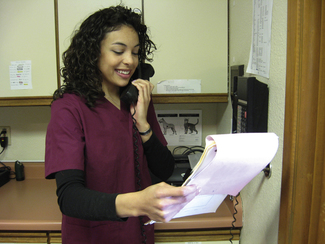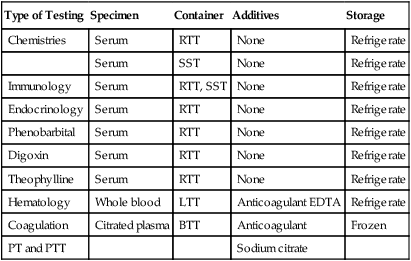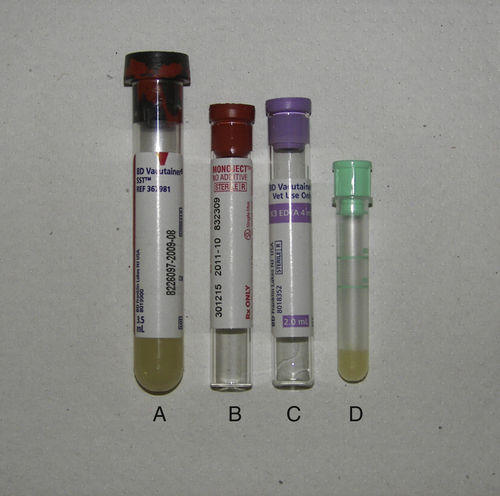CHAPTER 9

Outside Diagnostic Laboratory Services
Mastery of the content in this chapter will enable the reader to:
• Identify the correct sample needed for specific testing.
• List methods used to preserve samples correctly.
• List methods used to label samples correctly.
• Define methods used to submit samples safely to the lab.
• Describe an appropriate fee structure for outside laboratory services.
SAMPLE SUBMISSION
EDTA (ethylenediamine tetraacetic acid) is an anticoagulant that is added to a lavender-topped tube, preventing clotting of the blood. Plasma can then be obtained by centrifuging the sample and removing the liquid portion of the sample without any red blood cells. Other common anticoagulants include lithium heparin, sodium heparin, and potassium citrate (Figure 9-1 and Table 9-1).
Table 9-1
| Type of Testing | Specimen | Container | Additives | Storage |
| Chemistries | Serum | RTT | None | Refrigerate |
| Serum | SST | None | Refrigerate | |
| Immunology | Serum | RTT, SST | None | Refrigerate |
| Endocrinology | Serum | RTT | None | Refrigerate |
| Phenobarbital | Serum | RTT | None | Refrigerate |
| Digoxin | Serum | RTT | None | Refrigerate |
| Theophylline | Serum | RTT | None | Refrigerate |
| Hematology | Whole blood | LTT | Anticoagulant EDTA | Refrigerate |
| Coagulation | Citrated plasma | BTT | Anticoagulant | Frozen |
| PT and PTT | Sodium citrate |

Stay updated, free articles. Join our Telegram channel

Full access? Get Clinical Tree


 PRACTICE POINT
PRACTICE POINT
 PRACTICE POINT
PRACTICE POINT